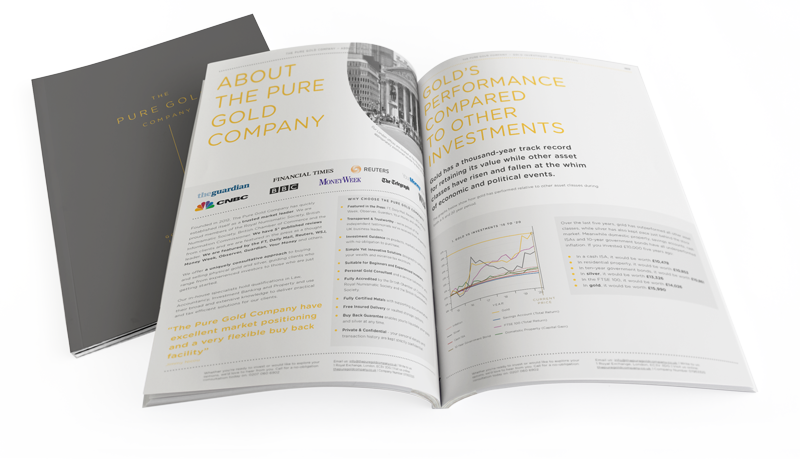The World Gold Council estimates that the entirety of gold ever mined amounts to 187,200 tonnes. Other estimations put that figure higher, including the US Geological Survey (USGS) at 244,000 tonnes, which would fit in a cube just 28 meters wide on every side. Even if this figure is larger still, it remains a small proportion of the world’s mineral wealth but one of the most valuable and therefore a great long-term investment. So where has all this gold come from and where has it gone?
Where in the world is all the gold?
The history of gold mining stretches back over 7000 years, with early gold decorative objects found in what is today Eastern Europe. Initially, only ore that was on the surface, like alluvial gold deposits in streams and rivers, was mined, but as more complex extraction processes were developed, mining began to include underground deposits as well, where the vast majority of gold is mined today.
Top gold producing nations
South Africa was the top gold producing country for many decades, peaking in the 1970s with production at almost 1,000 tonnes in 1970. However, falling production in South Africa coupled with rising production elsewhere meant South Africa lost its production crown to China in 2007, and the country had fallen down the rankings to 12th by 2022.
Gold mining and gold price
The rising gold price has impelled mining companies to expand their exploration projects, and the geographic diversification of these projects is much wider than it was during South Africa’s heyday. The sterling value of gold has increased almost seven-fold since the early part of the century, and this has made it far more feasible to explore and produce gold in many more places. Where 25 years ago four countries accounted for just over 50% of gold production (South Africa, United States, Canada, and Australia), this had fallen to 24% by 2020.
Top gold producing nations
China remains the top producing nation today, with 368 tonnes mined in 2020, followed by Russia with 331 tonnes, Australia with 328 tonnes, and then the USA with 190 tonnes. Despite the change in production rankings, the actual volume of gold produced rose fairly steadily in the 21st century. Over the decade between 2010 and 2020, gold production rose from 2,831 tonnes to 3,478 tonnes, with a peak of 3,653 tonnes in 2018.
Sustainable mining levels?
Whether this level of production is sustainable long-term is questionable. The US Geological Survey estimated in 2022 that there are 54,000 tonnes of gold reserves globally. This figure for gold reserves is an estimate with a reasonable level of geological certainty, meaning they are probable or proven, as compared to gold resources which are only inferred or indicated.
At the present rate of extraction, assuming all the reserves are mined, gold production can be sustained for another 15 years. Still, inferred gold resources, new discoveries, and new technologies may increase the quantity of reserves that are extracted.
What is Peak Gold?
The concept of Peak Gold, or the most gold mined in any one year, is hard to pinpoint, but some experts believe this point has already been reached in 2019 and that annual production will continue to decline going forward. Others suggest this may be premature, and certainly the high gold price is a strong incentive for mining companies to increase exploration and discovery activity.
Physical Gold And Pensions
Discover the benefits of investing in physical gold through your SIPP with our handy guide.

Where is all the gold in the world?
Gold is largely impermeable so theoretically all the gold ever mined should still be around. Though some of it may realistically be lost, the majority is still in circulation, so where is all the gold?
According to the World Gold Council, around 47% of all the gold mined thus far is in the form of jewellery. The oldest form of gold jewellery was discovered in Bulgaria and dates back to 4,300 BC. The precious metal has been used as a status adornment for millennia across many civilizations. Gold remains an important part of many cultures and societies.
Today, gold jewellery makes up the largest proportion of gold production, accounting for 50% of all gold demand. India and China in turn account for over 50% of jewellery demand by volume.
India has a long history of gifting gold, especially for weddings and religious festivals, and its growing affluence is driving demand even higher. Gold serves as a store of wealth, a status symbol and as part of faith rituals. It is especially auspicious in some religious cultures like Hinduism and Jainism. As one of the world’s largest jewellery consumers, over half of the gold jewellery bought in India is destined for the bridal market. This affects some of the seasonality of gold purchases in the country.
Until 2011, India was the largest consumer of gold jewellery, but it has been overtaken by China, which has become the largest gold-consuming country in the world, in addition to being the largest gold producer today. Two-thirds of the gold consumed in China is in the form of jewellery, while a quarter is taken up with investment.
After jewellery, gold in the form of bars and coins (including gold used to back Exchange Traded Funds) accounts for around 22% of the mined gold. 17% is held by central banks. The remaining 15% is in other forms including industrial applications like electronics and dentistry.
Central bank gold circulation
Of the central bank gold in circulation, currently, the USA has the largest gold reserves in the world, stockpiling 8,133 tonnes of gold as of the first quarter of 2021. America’s gold reserves are held in five main locations, the largest being Fort Knox in Kentucky, where over half its gold reserves are stored, and most of the rest is in deep vaults under Denver, West Point and New York.
In a distant second place, Germany holds 3,362 tonnes of gold, while Italy and France have reserves of around 2,400 tonnes. The Russian Federation holds around 2,300 tonnes today, up from just 422 tonnes in 2000. China has increased its gold reserves from 395 tonnes to 1,948 tonnes, according to the World Gold Council.
In all its forms, whether jewellery, investment-grade bullion, or central bank stocks, gold is revered for its immutability, beauty, and store of wealth. With a finite amount of mined gold in the world and a finite estimate of gold still to be mined, the value of the yellow metal looks set to continue its millennia of growth.
Gold for investment
Gold is viewed as a safe-haven asset for its immutability and store of value. It is a limited resource, and the value has reflected its rarity. If we have reached ‘peak gold’ or even if we are approaching it in the next decade, this rarity will only increase. As you might expect, this will likely be reflected in gold’s value, underpinning gold investments over the long term.


